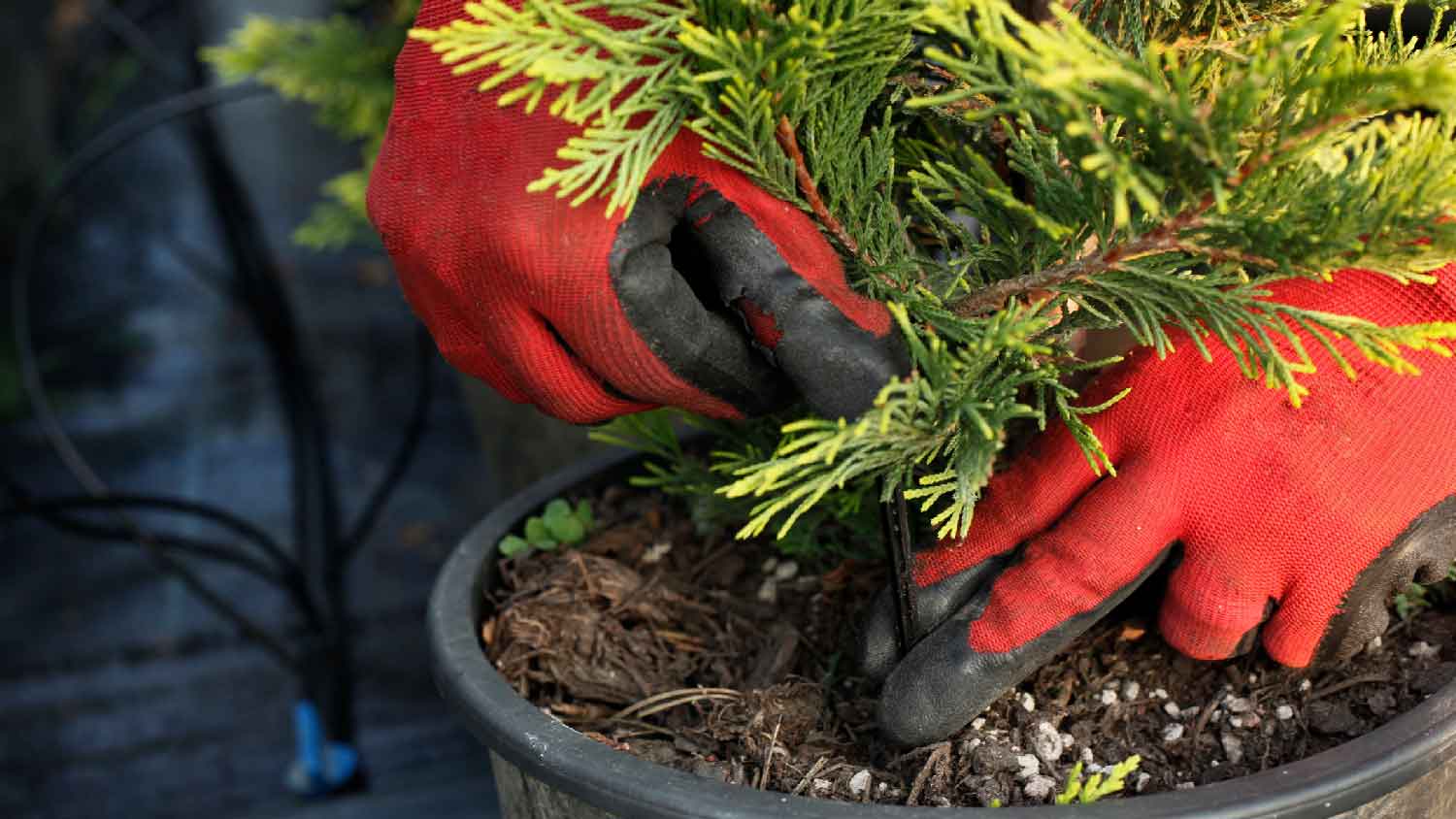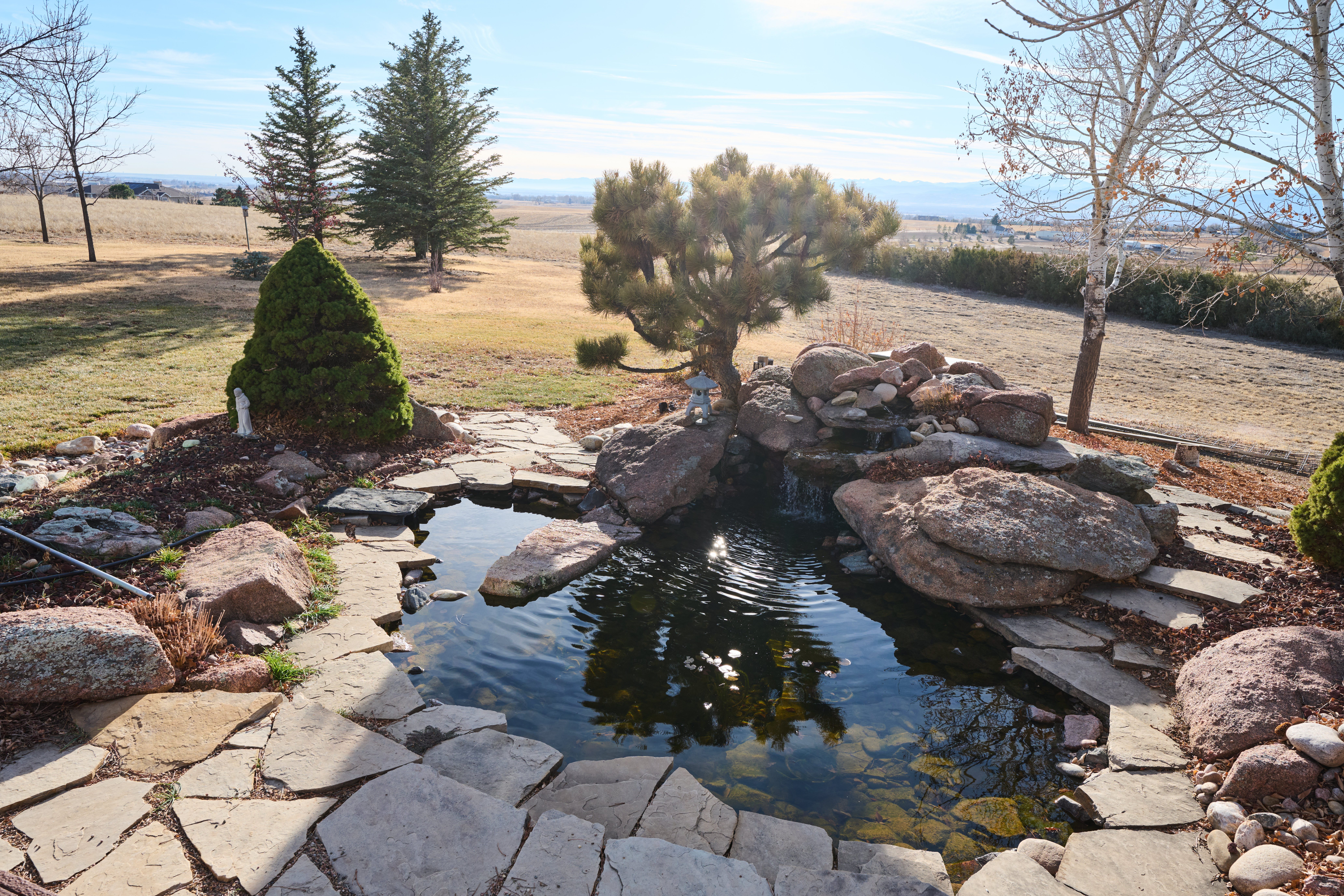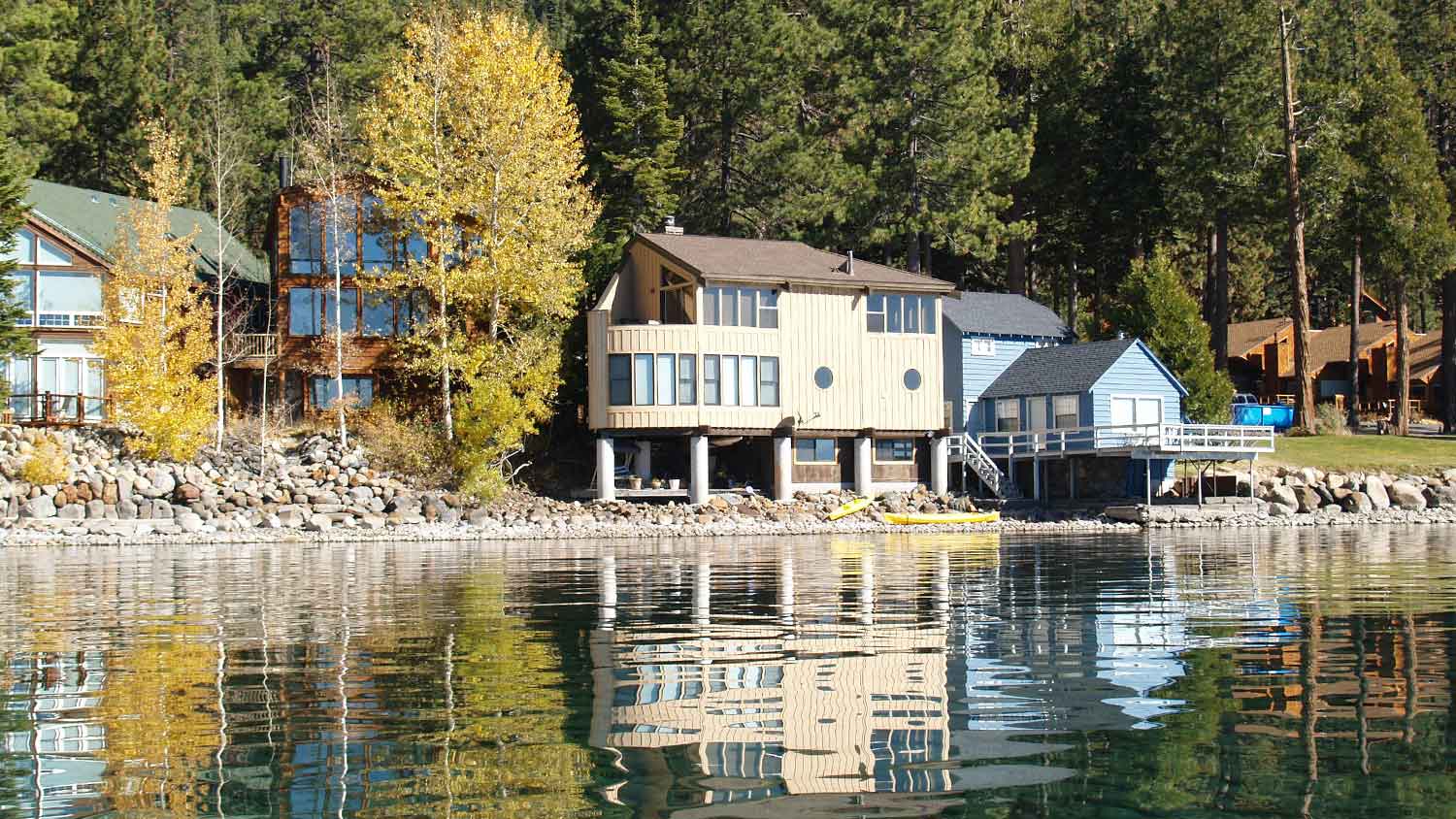
Ivy might look pretty, but you probably don’t want it in your garden. Learn how much it’ll cost to remove ivy by type, treatment method, and more.
Hedge installation costs average $1,100, with homeowners paying between $500 and $2,200, depending on hedge type, size, labor, and additional features


How much hedges cost varies by plant type, size, and installation complexity.
Costing between $10 to $45 per linear foot, professional hedge planting ensures healthy growth and long-term success.
Maintenance, permits, and site prep can impact your total hedge planting investment.
Hedges offer privacy, curb appeal, and potential property value boost.
Choosing the right hedge can reduce long-term maintenance needs.
This article was created using automation technology and thoroughly fact-checked and edited by an Angi Editor in accordance with our AI policy.
How much do hedges cost? On average, homeowners spend $1,100 to install hedges, with costs ranging from $500 for small, simple projects to $2,200 or more for large or specialty plantings. Expect to pay $10 to $45 per linear foot, depending on the hedge type and installation complexity. This guide explains what influences hedge installation costs, why the right hedge matters for your property, and what to expect before hiring a pro or starting a DIY project.

The size of your hedge project is a major cost driver. Both the total length (measured in linear feet) and the height of the hedge affect your final price. Longer hedges require more plants and labor, while taller or more mature plants cost more upfront. Choosing between a single row or multi-row planting also impacts your material and labor needs.
Spacing and density are important. Tighter spacing means more plants per foot, which increases your cost but results in a fuller hedge sooner. Residential hedge projects range from 20 to 100 linear feet, with the number of plants and overall price scaling accordingly.
| Hedge Length (Lin. Ft.) | Height (Ft.) | Number of Plants | Average Cost |
|---|---|---|---|
| 20 | 3 | 10–20 | $200–$900 |
| 40 | 4 | 20–40 | $500–$1,800 |
| 60 | 5 | 30–60 | $1,000–$3,000 |
| 80 | 6 | 40–80 | $1,800–$4,500 |
| 100 | 6+ | 50–100 | $2,500–$6,000+ |
Popular choices for hedges include boxwood, privet, arborvitae, laurel, holly, and yew. Evergreen species cost more than deciduous options, but they provide year-round coverage. Fast-growing varieties can be less expensive for initial purchase but may require more frequent maintenance. Mature plants cost more than seedlings but offer instant privacy.
Each hedge type comes with its own pros and cons. For example, boxwood is dense and formal but slow-growing, while arborvitae provides quick privacy but needs regular shaping. Specialty options like flowering, edible, or mixed-species hedges add beauty but increase the overall cost.
| Hedge Type | Description | Cost per Lin. Ft. | Pros | Cons |
|---|---|---|---|---|
| Boxwood | Dense, evergreen, formal | $20–$40 | Low maintenance, classic look | Slow growth, higher upfront cost |
| Privet | Fast-growing, deciduous/evergreen | $10–$20 | Affordable, quick coverage | Needs frequent trimming |
| Arborvitae | Tall, evergreen, columnar | $15–$35 | Fast privacy, cold-hardy | Susceptible to wind damage |
| Laurel | Broadleaf, evergreen | $18–$30 | Lush look, good screening | Can be invasive, needs pruning |
| Holly | Evergreen, spiny leaves | $20–$45 | Attractive, wildlife-friendly | Slow to establish, prickly |
| Yew | Dense, shade-tolerant evergreen | $25–$45 | Long-lived, tolerates pruning | Toxic berries, slow-growing |
| Mixed/custom | Flowering, edible, specialty | $25–$50+ | Unique appearance, seasonal interest | Higher cost, complex maintenance |
Depending on where you live, local climate dictates which plants will thrive, affecting both selection and price. Labor rates are higher in urban and coastal areas than in rural or lower-cost states. Nursery availability and transportation costs also play a role—remote areas may face higher delivery fees.
Hedge installation costs can also differ depending on whether the hedge is in your front or backyard, or along a difficult property line. Challenging sites, like slopes or poor soil, increase labor and material costs.

Several variables can impact your hedge installation cost. Understanding these will help you budget more accurately and avoid surprises.
Most hedges are installed by landscapers, arborists, or experienced gardeners. Labor rates range from $50 to $150 per hour, with some hedge installation pros charging $5 to $15 per linear foot or a flat fee for installation. Minimum service fees may apply to small projects. Larger or more complex projects, such as those with difficult access or large, mature plants, will increase labor costs. Project complexity, such as curved or multi-row plantings, increases labor and material needs
Permits are sometimes required for hedge installation, especially if your hedge will act as a fence or exceed local height limits. Always check with your local building or zoning office before starting your project. Some areas may also require inspections or compliance fees after installation.
Adding these extras will increase your overall cost:
Drip irrigation installation: $0.50–$5 per sq. ft.
Mulching, edging, and weed barriers: $0.20–$0.60 per sq. ft.
Integrated fencing: $11–$90 per lin. ft.
Landscape lighting: $50–$500 per fixture
Trellis: $45–$260 per lin. ft.
Custom shapes or topiary work: $30–$320
Landscape design: $50–$150 per hour
Site preparation, including excavation or grading, may be required, especially for replacing old hedges. Delivery fees for plants and materials vary, and post-installation cleanup and disposal may be charged separately.
Beyond installation, several ongoing and one-time expenses can affect your total investment in hedges.
Some nurseries and landscapers offer warranties on plants, which can cover replacement if a hedge fails to thrive. Warranties last one to three years and may increase the upfront price by 5% to 15%. While this adds cost, it can save money if you need replacements later.
Newly installed hedges require regular watering, especially in the first season. If you install an irrigation system, expect to pay for ongoing water use. Fertilizers and soil amendments cost $0.02 to $0.08 per square foot, depending on hedge length and type. Seasonal costs, such as winter protection or pest management, should also be factored in.
Hedges need regular trimming and pruning. DIY maintenance is possible, but professional trimming costs $150 to $850 for one to three bushes. Long-term care may include disease management, pest treatment, or replanting dead sections. Maintenance needs differ by species—fast-growing hedges require more frequent care.
Sales tax may apply to plants, materials, and installation services, depending on your state. Some localities also levy landscaping or improvement taxes, which can add a small percentage to your total project cost.
Homeowner’s insurance may cover hedge damage from storms or vandalism, but not normal wear or disease. Liability coverage is important for large or boundary hedges, especially if they border sidewalks or roads. If you hire a pro, confirm they carry adequate insurance to protect your property during installation.

Homeowners often weigh the pros and cons of DIY hedge installation versus hiring a professional. Each approach has distinct cost implications.
If you take the DIY route, you’ll pay only for plants, soil, mulch, and basic supplies, depending on plant size and type. You’ll also need tools such as shovels, trimmers, a wheelbarrow, and irrigation supplies. DIYers save on labor but invest significant time and physical effort. Improper planting or spacing may lead to plant loss and higher long-term costs.
Professional installation includes site preparation, planting, and initial care, often with a warranty. Costs are higher, but you benefit from expertise, faster completion, and better plant survival rates. A pro can also help you select the right hedge species for your climate and soil, reducing the risk of failure.
Deciding whether to repair or replace a hedge depends on its condition and age. Understanding costs and long-term impacts will help you make the best choice.
If your hedge has gaps, dead sections, or disease, targeted repair may be possible. Full removal and replacement of an entire hedge line is more expensive, ranging from $1,000 to $6,000 or more, depending on length and plant maturity.
If the hedge is old, severely damaged, or warranties have expired, replacement is the better investment. The 50% rule is a good guideline: If repair costs exceed half the price of a new installation, replacement makes more sense. Repeated repairs can add up, making new installation the more cost-effective option in the long run.
Hedge installation can offer a strong return on investment and boost your home’s curb appeal. While ROI varies, well-maintained hedges can return 50% to 80% of their cost in increased property value. Hedges create privacy, reduce noise, and enhance security—benefits that appeal to potential buyers.
Compared to other landscaping improvements, hedges cost less upfront than fencing or mature trees but deliver lasting value. To maximize ROI, choose species suited to your climate, invest in professional installation, and consider mature plants for immediate impact. Hedges also support environmental goals by providing habitat and improving air quality.
Safety, efficiency, and aesthetics all play a role in the value hedges bring. Well-designed hedges can define spaces, protect children and pets, and offer universal appeal.
Try these budgeting tips to save on your hedge costs:
Buy smaller or younger plants to lower upfront costs.
Choose native or readily available hedge species for better pricing.
Space plants appropriately to reduce total plant count without sacrificing coverage.
Perform site prep and cleanup yourself to save on labor.
Install hedges during off-peak seasons for potential discounts.
Get multiple quotes from local hedge installation pros to compare pricing and services.
Consider phased installation for large projects to spread out costs.
Home is the most important place on earth, which is why Angi has helped more than 150 million homeowners transform their houses into homes they adore. To help homeowners with their next project, Angi provides readers with the most accurate cost data and upholds strict editorial standards. We extensively research project costs to develop the pricing data you see, so you can make the best decisions for you and your home. We rely on reputable sources, including the U.S. Bureau of Labor Statistics, academic journals, market studies, and interviews with industry experts—all to ensure our prices reflect real-world projects.
Want to help us improve our cost data? Send us a recent project quote to [email protected]. Quotes and personal information will not be shared publicly.
From average costs to expert advice, get all the answers you need to get your job done.

Ivy might look pretty, but you probably don’t want it in your garden. Learn how much it’ll cost to remove ivy by type, treatment method, and more.

Leveling your yard can help with drainage and prevent damage to your home. Learn the cost to level a yard in Dallas, TX and what factors can affect the price.

What are average sod installation prices? Learn how much sod costs in Dallas, TX, based on factors like square footage, land prep, land condition, and more.

Preparing your pond for the winter can keep it healthy until springtime. Learn how to winterize a pond with this how-to guide.

Do your hedges need a trim? Learn how to trim hedges correctly, key tips to keep them healthy, and how to stay safe while tackling the task.

Riprap prevents erosion and protects your shoreline when done right. Learn who to hire for riprap and how to find a licensed professional.